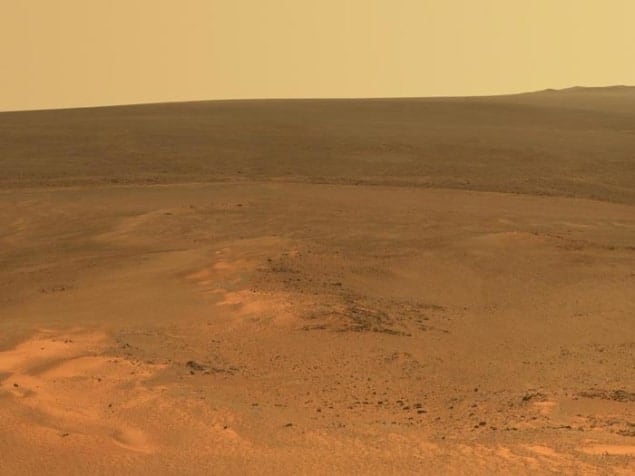
The Indian government has approved a mission to Mars in what would be the country’s first visit to the red planet. The news comes just four years after India launched its maiden mission to the Moon – Chandrayaan-1 – and days after NASA landed the Curiosity car-sized rover on Mars.
The £70m mission will be launched in November 2013 from India’s spaceport at the Satish Dhawan Space Centre on the island of Sriharikota using the Polar Satellite Launch Vehicle. The mission, which will orbit Mars and study the planet’s geology and climate, has already been allocated £26m in the country’s science budget.
Details of the new mission remain scarce as the Indian Space Research Organisation (ISRO) remains tight-lipped about the probe. However, it is expected that more information will be released on 15 August, when India’s prime minister delivers the country’s Independence Day speech.
The Mars orbiter is expected to weigh 500 kg, with a scientific payload of around 25 kg, and be placed in a highly elliptical orbit around the planet. “Not knowing the payload specifics, it is hard to judge [the mission],” says Jeffrey Plescia, a Mars researcher at Johns Hopkins University in the US. “But the Chandrayaan mission had a diverse set of instruments that provided a great deal of unique data. If they do something similar [to the Mars mission], then it could be a substantial contribution to science.”
A source of national pride
There has been a lot of debate in India about whether the country should have a space programme at all. Yet it has been pointed out that the cost of the mission is less than 0.01% of the country’s overall annual budget. Moreover, this money would be spent mostly on hi-tech jobs and advanced technology, as well as supporting and training university students who might study the data that the probe sends back.
The mission would also be a source of pride and excitement to the country, much like the Curiosity mission is doing in the US Jeffrey Plescia, Johns Hopkins University
“I think they look at this in a similar way [to how] the US looked at Apollo – in that they are trying to demonstrate that they are a technologically advanced country and a leader in Asia,” adds Plescia. “Space programmes are not really about science, they are about national prestige and national security. The mission would also be a source of pride and excitement to the country, much like the Curiosity mission is in the US.”
It is not known, however, if other countries will provide payloads for the new mission. Chandrayaan-1 carried instruments from NASA, the European Space Agency and also Bulgaria, so it is hoped that India will open it up for foreign involvement.



